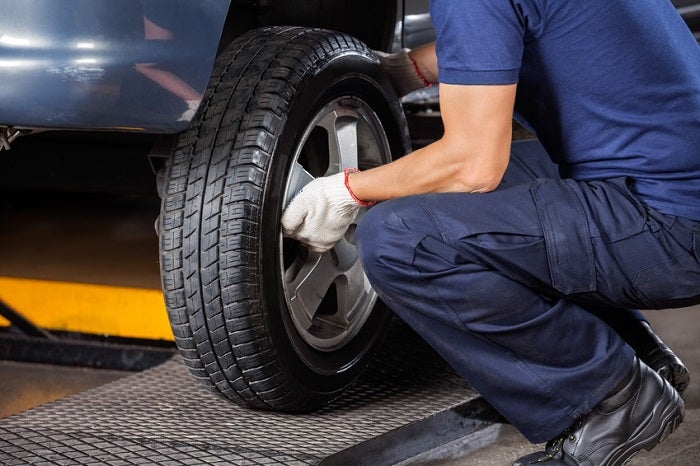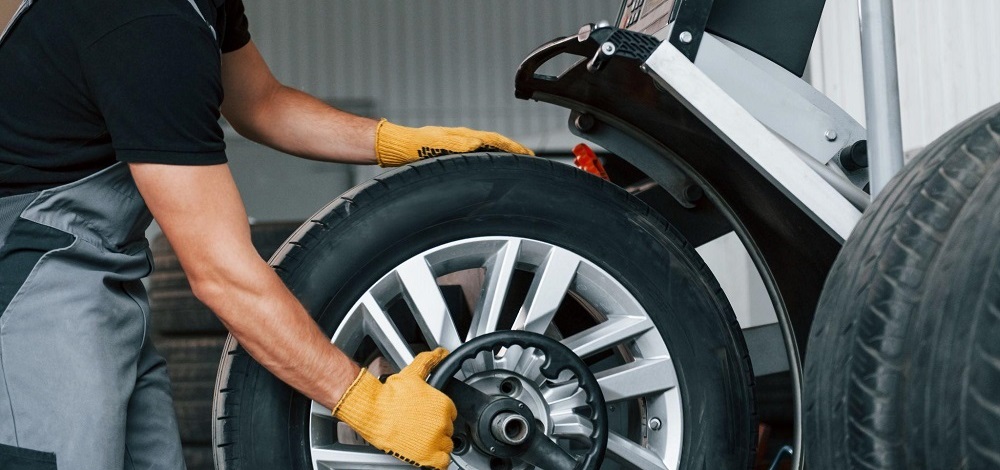Tire Solution: The Impact of Weather Conditions
When it pertains to ensuring ideal performance and safety and security when traveling, understanding the effect of climate condition on tire solution is vital. From scorching heat to icy roads, each weather condition aspect can significantly influence tire performance and general driving experience. By delving right into the impacts of differing weather condition problems on tires, motorists can gain important understandings that may enhance their automobile's efficiency and longevity. In this conversation, we will discover the complex partnership between climate condition and tire solution, dropping light on the importance of weather-specific tire upkeep techniques and factors to consider.
Warmth and Tire Performance
When subjected to high temperatures, tires experience modifications in efficiency that can dramatically affect vehicle security and handling. The heat generated from long term driving or warm weather conditions creates the tire rubber to soften, resulting in decreased walk life and raised wear. As the rubber becomes softer, the tire's grasp when traveling diminishes, influencing stopping ranges and overall grip. In extreme instances, excessive warm can even trigger tire blowouts, posturing a serious safety danger to the automobile and its occupants.

Cold Weather Effects
Cold weather conditions can have a substantial effect on tire performance and security. As temperature levels drop, tire rubber can harden, causing reduced traction on icy or snow-covered roads. In winter, tires might additionally lose air stress a lot more quickly, which can impact taking care of and fuel efficiency. In addition, cold temperature levels can cause tire sidewalls to stiffen, enhancing the risk of damages from holes or various other road threats.
To reduce the impacts of winter on tires, it is critical to frequently inspect tire stress and inflate them to the supplier's recommended levels. Utilizing winter months or all-season tires made for cold climate conditions can also improve grip and grasp on icy or snowy roads. Correct tire upkeep, consisting of routine examinations for wear and damage, ends up being a lot more critical throughout cooler months to make certain optimum efficiency and security.
Rainy Conditions Influence
During rainy conditions, tire performance and safety and security can be substantially influenced by the damp roadway surfaces and reduced exposure. The tread pattern of tires plays an important duty in keeping grip on wet roadways. Tires with worn-out treads are more vulnerable to hydroplaning, where a layer of water accumulates between the road and the tire surface area, resulting in loss of grip. To combat this, vehicle drivers ought to on a regular basis examine their tires for appropriate tread depth and take into consideration purchasing tires especially created for wet problems.
Additionally, rainy climate can likewise reduce visibility, making it testing for vehicle drivers to see the road ahead clearly (GMC Tire Service). In such conditions, it is important to readjust driving rates as necessary and maintain a safe adhering to distance to permit for sudden quits. Effectively filled with air tires can additionally aid in keeping control on wet roadways by supplying much better handling and grasp
Snow and Tire Security
When driving in snowy conditions, having the appropriate tires can make a substantial difference in security and efficiency. Winter season tires content are made with special rubber substances and step patterns to supply far better grip on snow and ice compared to all-season tires.

Additionally, drivers ought to consider mounting tire chains in extreme snowy conditions. Tire chains supply added grip by grasping the snow and ice, enhancing stability and control. It is important to follow producer directions when installing and making use of tire chains to stop damage to the tires and vehicle (GMC Tire Service). By picking the ideal tires, maintaining appropriate rising cost of living, and thinking about added grip aids like tire chains, vehicle drivers can improve their safety and security when navigating snow-covered roadways.
Weather-Related Tire Upkeep
When confronted with different weather, appropriate tire upkeep becomes an essential facet of lorry safety and efficiency. Weather-related tire upkeep encompasses a variety of techniques focused on making certain optimum tire function and durability in various weather situations. One essential element of weather-related tire maintenance is tire pressure regulation. Varying temperatures can trigger tire pressure to vary, influencing grip and gas effectiveness. Regularly checking and readjusting tire stress according to manufacturer recommendations is important for risk-free driving in altering climate conditions. In addition, tire walk depth plays a significant role in managing different weather condition components. Tires with appropriate walk deepness provide better grasp on wet or icy roadways, decreasing the danger of hydroplaning or skidding. Checking tire tread routinely and replacing tires when step wear reaches a specific deepness is crucial for keeping traction This Site and stability in damaging weather condition. By prioritizing weather-related tire upkeep, drivers can boost safety and security, improve lorry efficiency, and lengthen the lifespan of their tires.
Verdict
In conclusion, weather conditions have a considerable effect on tire efficiency and safety and security. From warmth affecting tire stress and put on to cold weather lowering grip, it is essential to take into consideration the weather condition when preserving and making use of tires.
In this discussion, we will check out the complex relationship in between weather condition conditions and tire service, shedding light on the importance of weather-specific tire upkeep techniques and factors to consider.

Comments on “Improve Your Drive: Top-Notch GMC Tires Service at Morris Tires”